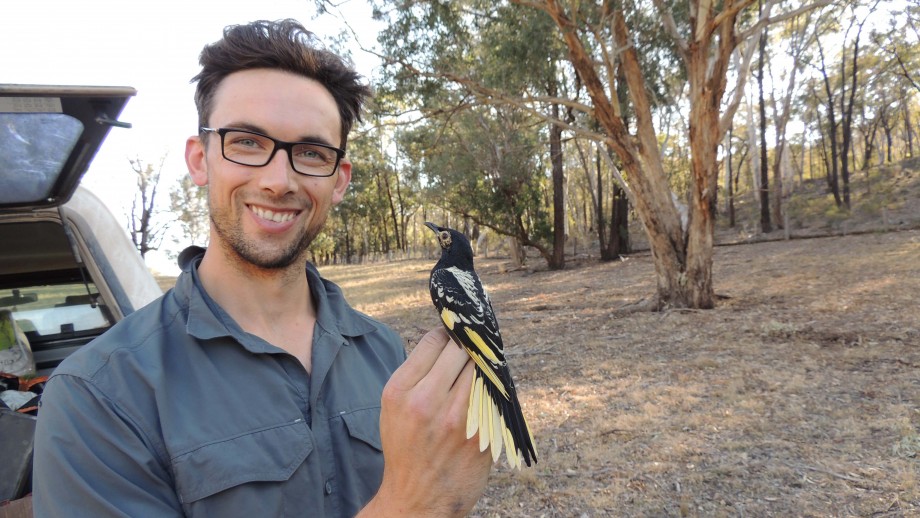Critically endangered honeyeater population discovered
Researchers at The Australian National University (ANU) have found a new breeding population of the critically endangered regent honeyeater.
The regent honeyeater used to be one of the most abundant birds in south-eastern Australia but there are now fewer than 400 in the wild.
Lead researcher Dr Laura Rayner said it was exciting to find more than 20 previously unrecorded birds in the chronically under-surveyed New England Tablelands bioregion in New South Wales.
"After hundreds of surveys turning up zeros we were so excited to find the birds. It was like finding a needle in a haystack," said Dr Rayner, from the ANU Fenner School of Environment and Society.
"This discovery represents one sixth of the global breeding effort for the species."
The discovery was part of a national monitoring program designed and implemented by researchers at the Fenner School. The first surveys started in August.
Dr Rayner said the national monitoring program is the first real attempt at using science to direct range-wide search efforts for this semi-nomadic species. Researchers use recorded bird calls to help detect the honeyeaters.
"We played their call and one bird responded, then another and another - some in pairs. It was wonderful." she said.
"Over the next few days we found more and more birds, and then we started to find their nests."
Dr Rayner said enhanced knowledge of the whereabouts and breeding attempts of the elusive bird is vital if the species is to be saved from the threat of extinction.
"Before this monitoring program there were only three key areas where people regularly looked for this species," she said.
During the current breeding season from August to January, the researchers will pay multiple visits to over 1,000 survey sites spanning the bird's 600,000 square kilometre range from Central Victoria to Southern Queensland.
Dr Rayner said knowledge gained from the monitoring program would help prioritise conservation action for this species, such as where to focus captive release efforts and where to restore habitat.
"For any species with only a few hundred individuals left, every nest counts," she said.
"The population size of this bird is less than that of other highly iconic threatened species like the Giant Panda and Sumatran Rhino - the same risk of extinction and need for action is real for the regent honeyeater."
Dr Rayner said the bird's survival depends on a strong unified commitment from experts, citizens and government agencies alike.
"We need people to come together and get behind this program and the conservation initiatives it supports to give this species the best chance of persisting in the wild."

